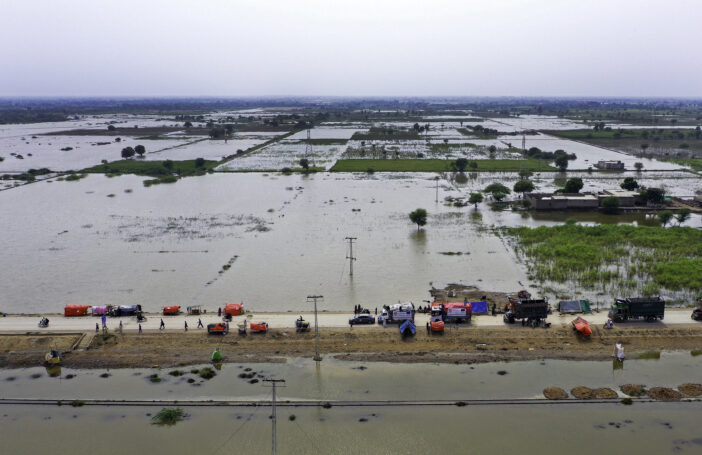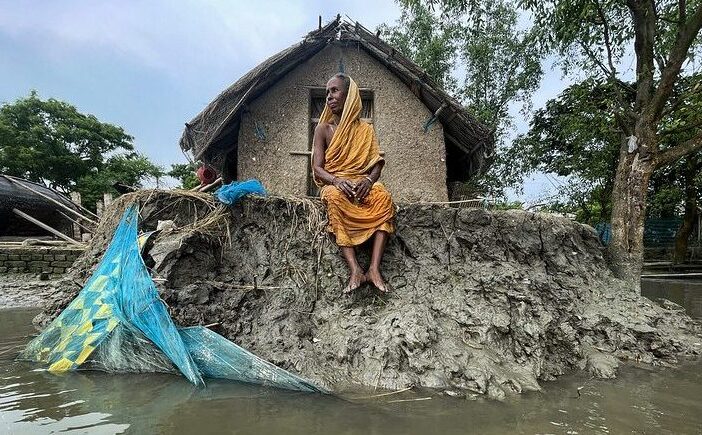As the global “polycrisis” continues apace – deepening poverty, hunger and misery in its wake – efforts to scale up global development finance in response have, sadly but unsurprisingly, taken a much slower course.
One of the more ambitious blueprints, put forward by Barbados’ Prime Minister Mia Mottley in mid-2022 – dubbed the “Bridgetown Initiative” – encompasses changes including: restructuring the sovereign debt architecture to enhance liquidity and prevent fiscal crises in low- and middle-income countries; greater redistribution of rich countries’ financial reserves and the mobilisation of private finance to mitigate vulnerability to shocks like climate change; and reform of the two principal institutions associated with the postwar “Bretton Woods” arrangements, the International Monetary Fund (IMF) and the World Bank.
Several G7 nations, including the US, Germany and France, have broadly backed the proposals. And they are expected to form the centrepiece of a development finance summit to be co-hosted by Mottley and French President Emmanuel Macron in Paris in June. This blog focuses on World Bank reform.
In 2022, the G20 commissioned an independent review of multilateral development banks’ (MDBs) capital adequacy frameworks (CAF). The “CAF review” recommended that the MDBs, of which the World Bank is the largest, revise their risk frameworks and better leverage their callable capital – funds pledged but not paid by shareholding governments – to support a scale-up in lending. In response to this review and a request from ten shareholders, including Australia, the Bank’s management published a proposed “evolution roadmap” in January. The document had leaked to the press weeks earlier.
The roadmap canvasses how the Bank’s dual mission of eradicating extreme poverty and increasing shared prosperity might be expanded to better support energy transitions in middle-income countries, address growing inequality between countries, and combat the cross-border dimensions of challenges such as climate change, state fragility and pandemics. In terms of operations, the document contemplates how the Bank’s current country-based programming and performance model, its concessionality and allocation criteria, and its private sector instruments could be reformed to support greater investment in global public goods.
On financing, the roadmap argues for a capital increase from shareholders to support greater non-concessional lending, increased concessional financing capacity, and the exploration of new concessional and blended financing options to incentivise investment in global public goods. It notes ongoing technical work for shareholders in relation to risk transfer, callable capital and other financing issues, but does not elaborate. As to next steps, the roadmap envisions that the process for consulting with shareholders, clients and stakeholders on a final reform package will roll out over the next nine months, culminating at the Bank’s annual meetings in October.
Reviews of the roadmap have been mixed. Some experts have highlighted the document’s overall lack of ambition (despite the Bank calling for more resources), as well as the absence of detailed analysis of the trade-offs involved in weighing increased investment in global public goods against country-based poverty reduction efforts. Given the scale of financing gaps, reform proponents have also argued for a quicker and clearer path on the CAF review’s recommendations.
Speaking on behalf of the Bank’s largest shareholder, US Treasury Secretary Janet Yellen has stated that “We would like to see some progress on a quicker timeline. And [we] think there are some things that could be done to expand lending given the current capital release.” Some developing country members are, however, reportedly concerned that the changes could undermine the Bank’s AAA credit rating and thereby increase its borrowing and lending costs.
Climate experts and advocates have questioned the adequacy of the Bank’s current 35% by 2025 target for climate investments, noting that other MDBs such as the European Bank for Reconstruction and Development and the Asian Infrastructure Investment Bank have 50% targets. They have also highlighted the need for the Bank to be more transparent about how it counts climate investments, and to ensure that its project financing is consistent with the Paris Climate Agreement.
Australia appears to be backing the push for major reform. On making better use of the Bank’s capital, Treasurer Jim Chalmers has called for “an expeditious and ambitious response” to the CAF review, noting that “the prospects for sustainable development for many developing countries appear under grave threat”.
On climate, Minister for Climate Change and Energy Chris Bowen declared at last year’s climate summit that, “Just as we commit to this agenda as individual nations, our multilateral development banks – including the World Bank – must be wholeheartedly committed to this, from their purpose to their actions.” More recently, Minister Bowen has acknowledged the importance of the Bridgetown Initiative, and argued that the June departure of current World Bank President David Malpass “provides an opportunity to reset leadership at the Bank and ensure the centrality of the climate challenge is at the core of their work”.
It is less clear whether Australia backs the Bank’s call for more resources. Treasury did support the last capital increase for the Bank’s non-concessional lending arm (the International Bank for Reconstruction and Development, IBRD) in 2018, noting that “It is in Australia’s interests to ensure countries in our region have a choice of sources of high quality finance products to meet their development needs.” Looking ahead, IBRD capital and knowledge could play a much bigger role in supporting complex clean energy transitions in Southeast Asian middle-income countries like Indonesia, the Philippines and Vietnam.
When it comes to the Bank’s International Development Association (IDA) – which provides concessional loans and grants to the world’s poorest countries – Australia’s contributions have declined over the last decade. Australia ranks 18th out of 52 donors for IDA’s current replenishment period (2022-25), down from 12th out of 56 in 2017-20. As colleagues have observed, this fall in burden share is at odds with both Australia’s position as the OECD’s ninth largest economy and the IDA’s increased commitments in the Pacific, which is consistent with the government’s advocacy for more multilateral attention on its near neighbours. Given mounting debt pressures, these small and fragile economies will need ongoing access to highly concessional finance for climate change adaptation.
If the Australian government wants the World Bank to do more to respond to multiple crises, it will require more than just encouraging the Bank to leverage its existing capital and hope that the private sector will fill the gaps. Australia, working with other shareholders, should continue to argue for a more ambitious and comprehensive reform package, including on climate change, than that offered by the current roadmap. In return, and commensurate with Australia’s size and its interests, the government should increase both its capital and concessional contributions to the World Bank.




